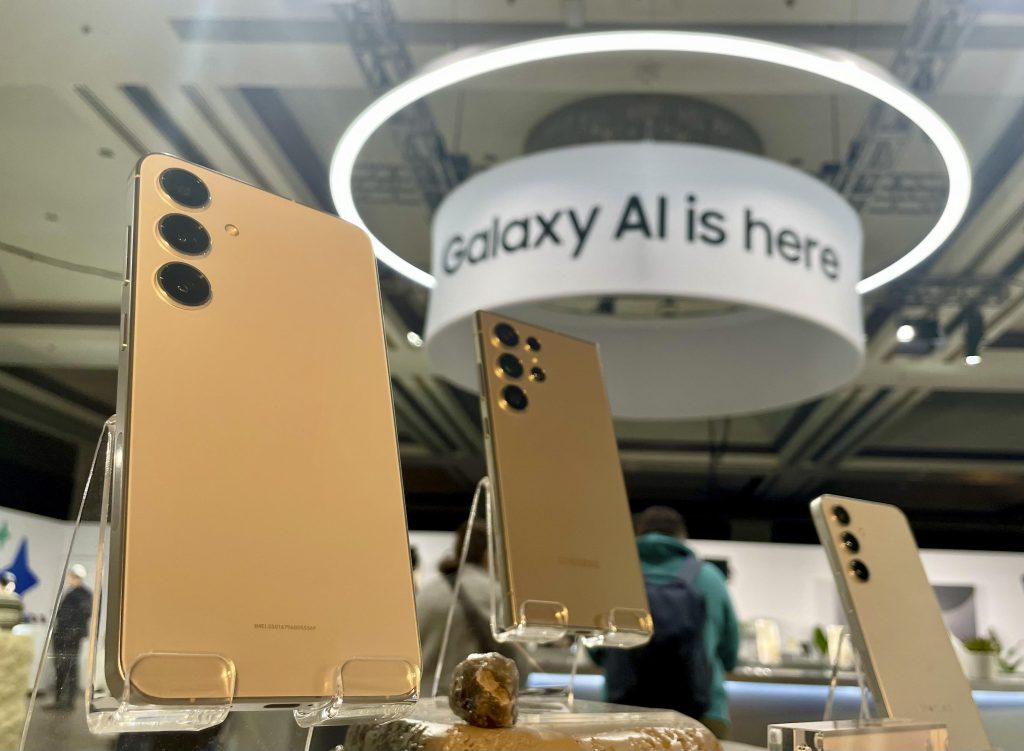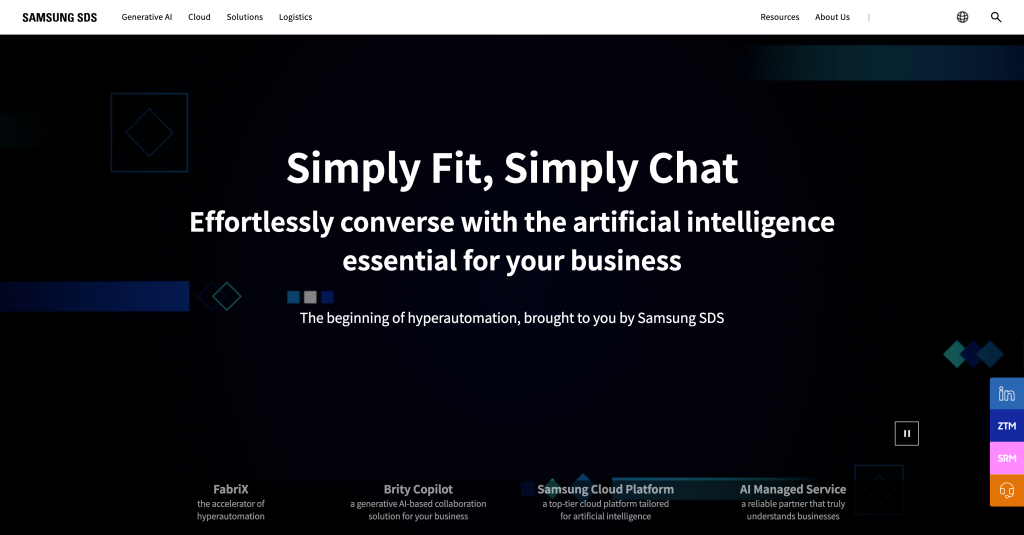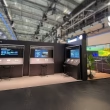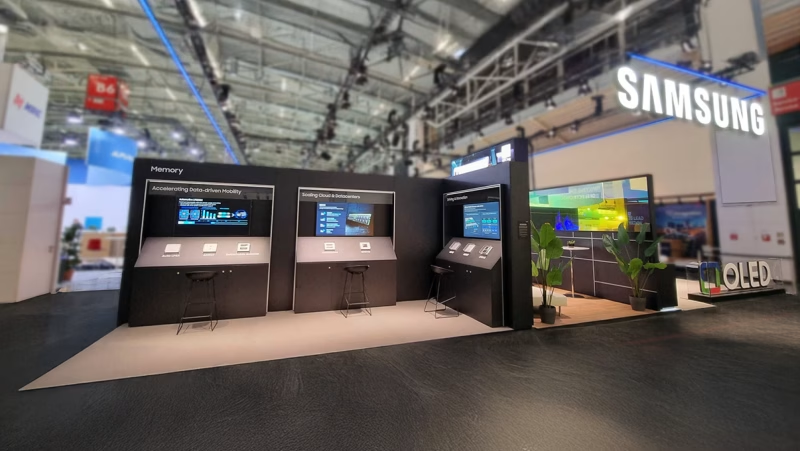If you’re wondering whether Samsung uses AI “in its business operations or otherwise,” the answer is a clear yes. It’s not just on glossy slides, either. You can see it in consumer features on Galaxy phones, in-house foundation models used by employees, enterprise software from Samsung SDS, AI-assisted chip design flows in the foundry, and even in refrigerators and TVs. The company talks about “AI for All,” but more telling is where AI actually shows up and moves work along.
Samsung’s Galaxy line brought “Galaxy AI” to millions of people with things most of us actually need—translation while you talk, writing help when you’re stuck, and smart note summaries when your brain’s done for the day. These shipped at scale on the Galaxy S24 series and expanded from there. Samsung’s own language around it is straightforward: real-time call translation, chat suggestions, and note organization that doesn’t feel like homework.

There’s also a quiet but important shift in the assistant story. On the Galaxy S25 generation, Google’s Gemini became the default voice assistant, while Bixby stayed available. That’s not a small switch; it shows Samsung pragmatically picking the best tool for the job while keeping options open. As one outlet put it, “Gemini is now enabled by default instead of Bixby,” though you can still use Bixby if you want.
What’s the business angle? Features like Live Translate reduce friction in sales or support calls, Note Assist speeds up reporting, and Circle to Search doesn’t just wow consumers—it helps field teams and analysts pull context faster. The upshot: more minutes saved, which compounds over thousands of employees. That’s real money, not hype.
The model behind the curtain: Samsung Gauss
Now for the part most consumers never see. Samsung built an in-house generative model called Samsung Gauss. It started inside Samsung Research and showed up publicly at the Samsung AI Forum. Early reporting described it in plain terms: a model family that can “generate text, code and images,” first used internally. Later, Samsung highlighted continued work on Gauss (and Gauss2) as a foundation for on-device and cloud experiences.
If you’re a software leader, one detail will jump out. Gauss includes a coding assistant (often referred to as Code.i in coverage) to help employees accelerate code writing and review. That’s not a novelty project; it’s a productivity lever across thousands of engineers. Even a modest time saving in pull requests or unit tests pays back fast at Samsung’s scale. As TechCrunch summarized when Gauss debuted, it was “being used internally… with its staff only,” with a road map to reach more users later.
Could Samsung have gone all-in on third-party models? Sure. But having its own stack lets the company tune models for phones, TVs, and chips, and keep sensitive design or supply chain data inside its walls. For a company that ships silicon and software, that control matters.
Enterprise muscle: Samsung SDS is where AI gets gritty

When you shift from consumer sparkle to enterprise guts, you land at Samsung SDS, the IT/services arm. This is where AI deals with workflows, documents, and logistics—the unglamorous work that determines margins.
One flagship: Brity Copilot, an enterprise generative AI tool billed as a way to “streamline communication and boost productivity.” It’s positioned for teams that live in email, chat, and documents—exactly where time sinks happen.
SDS also invests in Brightics AI, a platform for analytics and forecasting. Case studies mention market forecasting, promotion price optimization, and demand prediction—tasks that consistently make or save money when you get them even a bit more accurate.
And there are hard numbers, which is refreshing. One SDS logistics case study quotes a customer who adopted its AI-powered RPA for shipment tracking: “Now… it takes only 1.5 seconds, it used to take 30 seconds.” That’s the kind of speedup you can feel. Multiply that by thousands of lookups a day and it’s not just convenience—it’s throughput.
SDS has been showing this publicly, too. Its CES 2025 materials talk about enterprise AI agents that don’t just assist but execute multi-step tasks—essentially moving from “copilots” to “doers.” The pitch is that AI can understand a natural-language request, call the right systems, and get the job done end-to-end. That’s where a lot of enterprise AI is headed.
Chips and factories: AI in the foundry and design flows
If you build chips, you already know: AI in EDA tools moved from research to routine. Samsung’s foundry business has been working with Synopsys to certify AI-driven design flows on its advanced nodes. Synopsys said its AI-powered digital and analog flows achieved certification on Samsung’s SF2 process, with test chip tapeouts validating the results. That’s not theoretical; it’s the actual sign-off path for advanced designs.
In 2025, the companies said they deepened their collaboration. Samsung highlighted customer access to Synopsys’ AI-driven design flows and tuned IP portfolios for its latest processes. In practical terms, that means better PPA targets and faster design cycles for customers building on Samsung nodes. It also means Samsung’s own teams can push more complex SoCs with fewer trips around the block.
Zoom out and you see the theme everywhere in Samsung’s foundry messaging: enabling the AI era, from process technology to packaging. At Samsung Foundry Forum 2024, Samsung teed up that vision explicitly and pulled in partners like Arm and Groq to talk through what the next wave needs. If you’re a systems company, this is your runway—nodes, flows, IP, and packaging that assume AI as a baseline workload.
Does AI go beyond design tools into fabs? Samsung doesn’t publish every detail, and it’s wise not to guess. But industry-wide, AI now supports yield analysis, defect classification, and predictive maintenance—areas where large fabs have the data, the stakes, and the budget. Given the foundry’s public stance and partners, it’s fair to say Samsung treats AI as a lever across the silicon lifecycle, not a feature to bolt on later. That point will only get stronger as memory and foundry teams plug AI signals into each other’s loops.
The home front: fridges that “see,” TVs that “think,” and a smarter energy loop

Let’s step into the kitchen for a minute. Samsung’s 2024-2025 appliance line moved beyond touchscreens and fancy finishes. The Bespoke refrigerators with AI Vision Inside use cameras and computer vision to track what’s in your fridge. That’s handy on its own. It gets better when that vision ties into commerce. Early this year, Samsung announced a partnership so the fridge could suggest groceries when you’re low, identifying items and shipping that context to a store app. The Verge summed it up as recognizing “up to 37 food items” and helping you restock. That’s AI in a boring but beautiful place: you don’t have to remember the milk.
On the broader SmartThings side, Samsung has been building an “AI Home” layer that turns connected devices into sensors and helpers. Think of your TV or speaker noticing movement or sound and responding with gentle automations—lighting, air quality, or a nudge to start the robot vacuum. Samsung and independent coverage describe this as ambient sensing that feeds a local AI on the hub, which matters for privacy and latency. The idea isn’t sci-fi; it’s context, stored close to home.
Energy matters, too. SmartThings AI Energy Mode has been a proof point that household AI can be practical. Samsung has said it tracks usage and patterns and can trim consumption—especially when paired with newer Bespoke appliances built to respond smartly. As Samsung’s IFA 2025 messaging put it, people expect AI to help “track costs and save money,” and the company is leaning hard into that outcome, not just the gloss.
And yes, the living room got its own AI moment. Samsung calls its 2024-2025 sets AI TVs for a reason. The flagship Neo QLED 8K QN900D uses the NQ8 AI Gen3 processor, which Samsung says brings more neural networks and faster NPUs to improve upscaling and motion. Reviewers and Samsung’s own materials emphasize clearer images from lower-res sources—useful not only for movies but for video calls and sports. If you’re building an app that runs on Tizen or you ship ads/video to TVs, that upscaling matters because your content looks better by default.
Looking ahead, Samsung’s 2025 lineup pushes anti-glare screens and continues to fold AI features into image processing and content discovery. That’s helpful in bright rooms, sure—but it also shows the pattern: AI as default infrastructure, not a mode you switch on.
How this lands for business and AI software folks
If you buy, build, or partner in the Samsung ecosystem, a few practical cues might help.
1) Plan for model pluralism. Between Gauss, Gemini, and partner tools, Samsung’s stack is flexible. Your integrations should be model-agnostic where you can manage it. Build to APIs, not personalities. Keep security and data governance portable.
2) Assume on-device inference where it makes sense. Phones and TVs now ship NPUs that can handle real workloads. If your app or service can run lightweight models locally, you’ll win on latency and privacy—and likely battery, too. The cloud still matters for heavy lifting, but split the work.
3) Leverage what’s already there. Galaxy AI features like translation and note summaries are “good enough” baselines for many workflows. Don’t rebuild them unless your domain truly needs it. Instead, compose them into your flows.
4) Look at SDS for boring problems that pay. If you’re wrestling with forecasting, document routing, or logistics, SDS’s Brightics and Brity may be closer to out-of-the-box than a greenfield project. That saves your data science team for the differentiators.
5) Think silicon-up. If your product relies on AI performance, Samsung’s foundry roadmap plus Synopsys’ certified AI flows means more headroom ahead for power and area. Plan your next-gen features with that in mind; don’t cap your ambition at last year’s limits.
You know what? The most telling thing about Samsung’s AI story is how un-dramatic it is. The company isn’t chasing every shiny demo. It’s wiring AI into the places where seconds and watts and yield points turn into dollars. Phones translate while you talk. TVs sharpen the image you already paid for. Logistics lookups drop from half a minute to a blink. Engineers tape out sooner. And a fridge remembers the yogurt you meant to buy.







